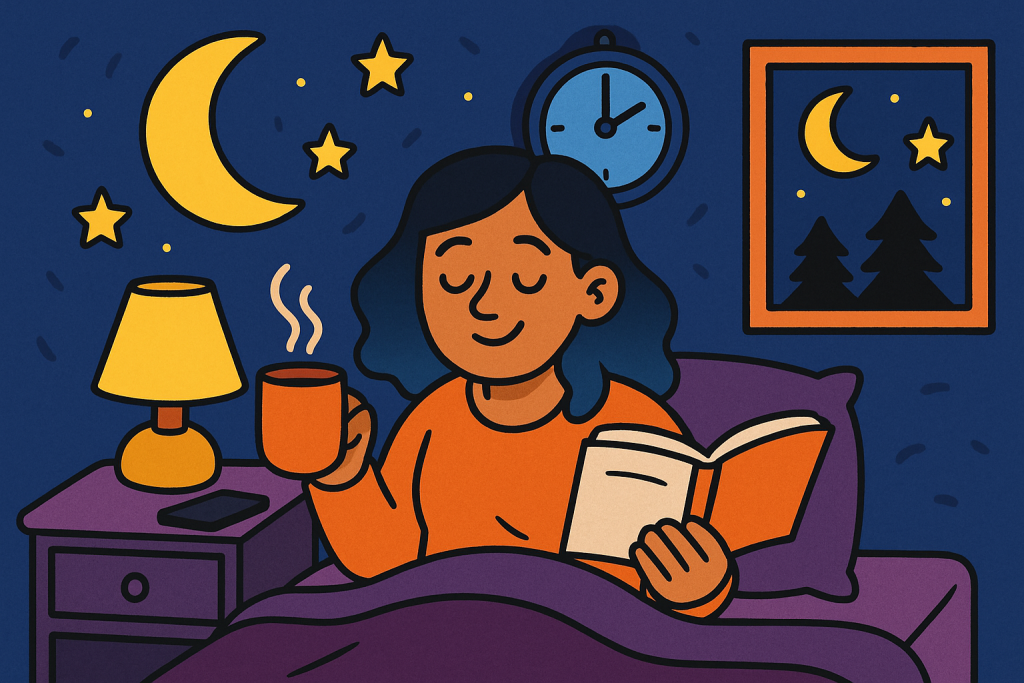End‑of‑day rituals help you calm down, close the workday, and prepare for tomorrow—a growing topic as people seek better sleep and mental clarity. In this guide, discover how to design better end of day rituals, with science-backed steps to help you disconnect, recharge, and feel ready for the next day.

Why an End‑of‑Day Ritual Matters
Today’s always-on culture blurs work and life. An end-of-day ritual gives your brain a signal: work mode is over. Here’s why it’s essential:
1. Supports Circadian Rhythms
Consistent evening habits cue your internal clock, improving sleep onset and depth.
2. Helps Mental Unloading
Jotting down tomorrow’s tasks frees your mind. A quick to-do list before bed helps transition off work thoughts.
3. Reduces Burnout
Studies link end-of-workday shutdown rituals with less stress and better work-life balance.
Designing Better End of Day Rituals
Here’s how to design better end of day rituals—tailored, manageable, and effective.
Step 1: Choose a Clear Transition Cue
Pick one or two actions that signal “end of work.” They should be:
- Consistent: same action daily builds habit.
- Physical: e.g., shutting down your laptop, changing clothes, lighting a candle.
- Pleasurable: a song, a high-five in the mirror, or a beverage makes it feel affirming.
Example rituals:
- Shut down your computer, close tabs, unplug.
- Put on a cozy sweater or play a “work-off” song.
- Make tea or pour water—something sensory.
Step 2: Reflect and Plan (5–10 min)
- Review accomplishments: cross off tasks, celebrate winning moments.
- Brain dump: note anything lingering mentally.
- Plan tomorrow: jot down 3–5 priority tasks to create mental closure.
Step 3: Clean Physical + Digital Space
- Desk/room: clear clutter, tidy documents and charger cables.
- Browser: close tabs, backup files in organized folders .
Clutter keeps your brain in overdrive; decluttering teaches closure.
Step 4: Screen-Free Wind‑Down (60–120 min before bed)
- Power down devices: Blue light disrupts melatonin and delays sleep.
- Reading & meditation: non-digital calming activities signal rest.
Routine example:
- 60 min out: Stop screens.
- 45 min: Stretch or meditate.
- 30 min: Read a light book in lamplight.
Step 5: Add Personal Recharge Rituals
- Journaling: emotional processing helps clear stress.
- Mindful movement: gentle stretches or breathing resets your nervous system .
- Self‑care: skincare, warm shower, aromatherapy — calming, practical.
Sample Enhanced Ritual Timeline
- 5:00 pm – Work ending signal: Close laptop, plug off, change to comfy clothes.
- 5:05 pm – Reflect on wins, brain dump, plan next day.
- 5:15 pm – Tidy workspace and browser.
- 5:30 pm – Low‑energy activity: walk, pet time, or chatter with family.
- 6:00 pm – No screens: dinner prep, chat, light reading.
- 7:30 pm – Shower, skincare, journaling.
- 8:00 pm – Bedtime entry: write gratitude, tension release.
- 8:15 pm – In bed: breathwork or calm reading for sleep.
Tips to Sustain It
- Keep it simple: 3–5 steps max.
- Stay consistent: rituals are about repetition.
- Customize: weave in family, hobbies, pets.
- Track progress: note improvements in sleep and mood after a week.
Emerging Trend: “Save the Day” Reset Rituals
On TikTok, the “Save the Day” trend encourages reclaiming personal time after work—doing one uplifting activity before the day ends. It aligns perfectly with shutdown routines:
- 10 min walk
- Cup of tea
- 5‑min dance break
These reset rituals boost mood and create stronger boundaries between work and relaxation.
What the Science Says
- Consistent sleep routines improve metabolic and heart health.
- Brain chemistry: regular evening cues help melatonin release and decision load reduction.
- Work detachment reduces burnout and improves next-day performance.
Final Thoughts
How to design better end of day rituals is about creating clear boundaries, mental decluttering, and sensory transitions. Crafting a routine—mindful shutdown, personal reset, and screen-free wind-down—helps you:
- Breathe out the day
- Feel accomplished
- Sleep deeper
- Hit tomorrow with renewed focus
Start small, tweak over time, and let the ritual become your nightly reset.
References
Lodwick, A. (April 4, 2024). The Clean Break: Improving Your End of Workday Routine. ReviewStudio. Retrieved from https://www.reviewstudio.com
Norton, M. I. (April 2024). The Research‑Backed Benefits of Daily Rituals. Harvard Business Review. Retrieved from https://hbr.org
Stojanovic, M. (June 24, 2025). 13 End‑Of‑Workday Rituals and Why You Need Them. Clockify Blog. Retrieved from https://clockify.me






